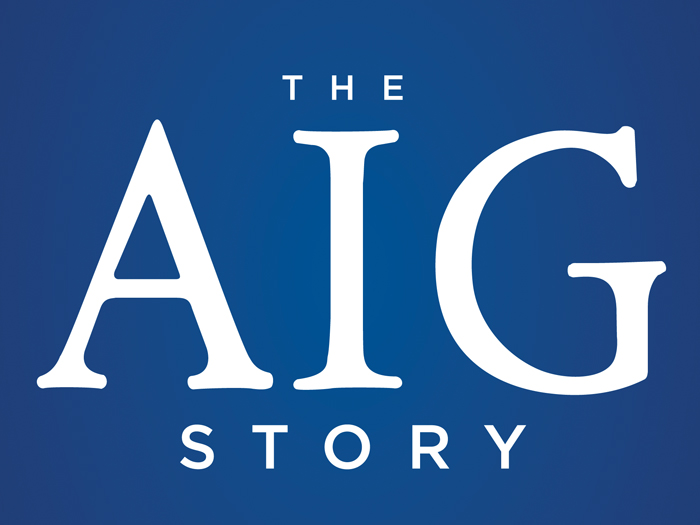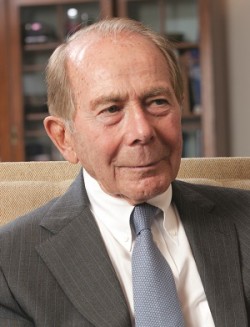Book Review
His Vision, His Version

Hank Greenberg and his co-author Lawrence Cunningham pack insurance industry history into a straightforward, 263-page book.
When a narrative becomes cloudy, the best course of action is to edit it.
In The AIG Story, the book he wrote with George Washington University law professor Lawrence Cunningham, Maurice “Hank” Greenberg adds valuable detail to a story that has perhaps been misreported and misunderstood by the media.
Greenberg, now the CEO and chairman of the Starr Cos., built AIG into a global power before being ousted in 2005.
In March, Risk & Insurance® interviewed Greenberg to get his thoughts on some of the events the book describes, including his career at AIU and AIG, his ouster from AIG and his current focus with the Starr Cos.
Greenberg initially spoke to us of his years under the tutelage of Cornelius Vander Starr, the founder of AIG, and some of the important assignments he was given — including the job of turning around American Home Assurance, an ailing multi-lines company. Greenberg was given this assignment after he had proven his worth building a global accident and health business for Starr’s American International Underwriters, the company that would become AIG.
“It was a very important assignment because it was a member of the AIU and if you can’t make a profit in your own company, then how do you manage somebody else’s?” Greenberg recounted.
To save American Home, Greenberg wanted to reinsure out all of its agency business and concentrate on writing large commercial business in the United States. He didn’t get his way without a fight.
But Starr backed him, and as he did with the accident and health business, Greenberg succeeded.
Starr found the man who would succeed him and Greenberg had earned the trust of those who would help him build AIG.
Having the Right Team
“When I succeeded Starr, I had a group of very loyal people,” Greenberg said.
Greenberg and Lawrence write that many of them, like Greenberg, were products of the military, trained to follow the commands of their leader. Not only is Greenberg a Korean War veteran, but he also fought in World War II.
At AIU, with Buck Freeman, John Roberts, Ernie Stempel and others, Greenberg had found the core of his team.
“We didn’t have to sit around and debate what we were going to do. Everybody knew what they had to do and they carried it out,” Greenberg said.
“It was a great structure,” he said of his early days with AIU and AIG, a company he built to the point that it recorded $798.6 billion in assets at the end of 2005.
It was an enviable culture, according to Joe Taranto, an AIG alumnus who is now CEO of Everest Re.
“A lot of what we at AIG learned was about enjoying and loving the business, I would say living the business, in the sense that it became something you took home with you,” Taranto said.
The year 2005 also brought Greenberg’s departure as CEO of AIG and the beginning of the end of the AIG that Greenberg and so many others had known.
In a conference call with analysts in February 2005, Greenberg characterized his views of overzealous financial oversight as regulators “looking at foot faults and turning them into a murder charge.”
Greenberg soon found himself in the crosshairs of Eliot Spitzer, then attorney general of New York.
Greenberg’s book details how Spitzer went on a national news television show in April of 2005 and accused AIG of fraud. Spitzer never brought criminal charges against Greenberg. But according to other reports, Spitzer pledged to bring Greenberg down.
Greenberg said he will never know what drove Spitzer. “The only thing I can tell you is that I never met the man,” he said.
AIG’s board couldn’t withstand the pressure from Spitzer, and Greenberg was forced to resign in 2005.
“Boards no longer supported their CEOs; they all wanted their own power base,” Greenberg said.
“It was a major change.”
Under the auspices of the Martin Act, Spitzer filed a civil complaint against AIG, accusing the company of improper accounting and skipping payments to workers’ compensation funds.
AIG’s board, after Greenberg had been ousted, agreed to a $1.6 billion settlement with the State of New York.
An online appendix to The AIG Story refutes the Martin Act charges.
The Events of 2008
A global credit crunch brought the near collapse of the financial system. Investment in an overvalued housing market and related securities was at the core of the global problem.
AIG, without Greenberg to oversee it, had abandoned the risk management prowess for which it had become famous and invested heavily in mortgage-backed securities.
With the decline in value of mortgage-related investments in 2007, AIG found itself with a severe liquidity problem.
But there were other problems. Greenberg would allege that the company had erred by adding 24,000 employees since his departure, enough for two army divisions, bloating the company’s loss and combined ratios.
He also challenged the board of his former company to explain why it had allowed the company’s U.S. life insurance operations to stagnate.
Risk & Insurance® recently interviewed Kevin Kelley, a Greenberg protégé who once ran the AIG subsidiary Lexington. Kelley was asked if AIG could have been spared had Greenberg remained as chairman and CEO.
“There is no doubt in my mind, absolutely none,” Kelley said.
AIG’s story to Kelley is a personally painful example of how much work it can take to build something, and how quickly that effort can be undermined.
“I think when you look at the history of AIG and you see, looking at Hank’s book and everything that he went through and everything that he inherited from others, that it is so hard to build a great business, so hard to build a global business when they were building it.
“But then you see how easy it can be to disrupt it,” Kelley said.
At the end of 2012, according to SEC filings, AIG listed $548.6 billion in assets, a 35-percent reduction from where the company stood at the end of 2008.
In May, former New York Governors Mario Cuomo and George Pataki wrote an op-ed in the Wall Street Journal, urging N.Y. Attorney General Eric Schneiderman to drop a now eight-year-old civil lawsuit against Greenberg, alleging that the lawsuit is a waste of taxpayer money and is morally “reprehensible.”
Soldier and Statesman
The book also details Greenberg’s role as an international statesman involving China and South Korea.
Greenberg, a friend of diplomat Henry Kissinger, supported China’s membership in the World Trade Organization, which it achieved in 2001.
Greenberg, the former chairman and a current member of the U.S.-Korea Business Council, also worked for seven years to help craft a free trade agreement between South Korea and the United States. He believes the same sort of agreement should exist between the United States and China.
“Well, look,” Greenberg said, “we are the two largest economies in the world and we have the choice of having constant trade friction that leads to a trade war and maybe something that is more difficult, or a free trade agreement,” he said.
Far better, he said, to open up trade and let that exchange lead to education and enlightenment.
If trade is established and cultures are allowed to meet other cultures and learn from them, positive change will come, in human rights and elsewhere, he said.
“It would take time but it begins to leak in there,” he said.
So is his work at Starr Cos. a chance to reclaim his name after all that transpired with AIG?
No, he says forcefully.
“I am not doing it to make a new name for myself.
“I do what I think is right. I don’t think of anything else but to work as hard and be as creative as I can with the people around me, to accomplish the best that we can accomplish,” he said.
“We are a private company, we don’t have a price to earnings ratio, we are doing what we think is right and we are doing it quite well,” he said.











